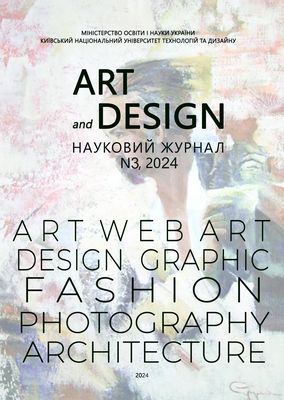COLLAGE IN DESIGN: A TOOL OR A FORM OF PROFESSIONAL THINKING?
DOI:
https://doi.org/10.30857/2617-0272.2024.3.14Keywords:
visualization, collage, visual communications, design, design graphics, creative processAbstract
Purpose of the study is to analyze the effectiveness of traditional collage and digital collage within the structure of design activity, to identify their main formative properties, and to establish priorities for use and specific tasks in conveying the objective properties and the emotional characteristics of the depicted object. This research involved the study of information sources related to the topic, critical analysis of the practices of using the latest means of visualizing creative projects, a review of the portfolios of contemporary designers and computer graphics artists, structural and system analysis, and synthesis of existing information and the latest research results. The insufficient study of collage as a means of design graphics highlights the need for research related to discovering its typological, functional, compositional, stylistic, and structural features. The history of the formation and development of collage allows us to assert that collage is not only a special artistic technique but also a revolutionary way of thinking during the transition to new artistic forms in the early twentieth century. Further transformation of collage occurred in a number of techniques that progressed and were actively used in the postmodern era. As a result of the analysis of contemporary form-making practices, a fairly wide range of collage applications has been revealed. This range spans across all types of artistic and design activities at the stages of pre-project research, in the process of creative work and synthesis of ideas, and in the presentation of design results. It has been established that collage and its varieties can rightly be considered a tool for the practical implementation of a project idea, a means of generating creative findings and stimulating search processes, as well as a form of professional thinking at the level of idea development. The study identifies the priorities of application and the main strategic directions for the feasibility and effectiveness of using traditional and digital collage in artistic and design activities. Рractical significance of the results obtained lies in their potential application in design practice, the educational process of training specialists in artistic and creative fields, and further research in art studies, cultural studies, architecture and design.

